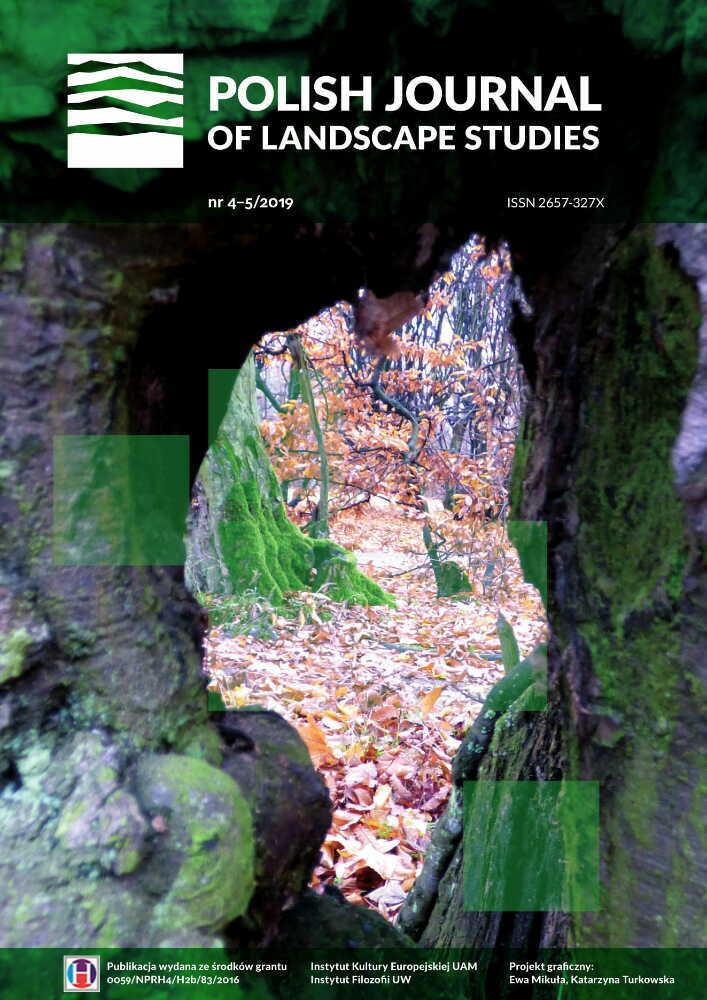Abstrakt
This paper examines industrial landscapes in Polish Cinema in the 60s. Upper Silesian scenery is considered not as a mere background but an essential element that constructs the cinematographic narration. Historic, economic, and socio-cultural context is brought up to draw attention to the propagandizing role of cinema in the 60s. The category of “iconic sites” proposed by Tim Edensor is introduced to analyze cinematographic depictions of Upper Silesia. Movies show the processes of industrialization framed by the strict artistic rules proposed by the Polish People Republic’s officials. The analyzed examples show the adoption of a distanced outsider’s perspective that is based on geographical and cultural orientation points. The propaganda images seen as “iconic sites” are confronted with another interpretative category proposed by Edensor, “quotidian worlds,” constituted by products of grassroots practices, focused on capturing the space of everyday experiences (surroundings) from the perspective of a citizen.Bibliografia
Bachelard, Gaston. 1994. The Poetics of Space. Boston: Beacon Press.
Belford, Paul. 2009. “English Industrial Landscapes — Divergence, Convergence and Perceptions of Identity.” In Crossing Paths, Sharing Tracks: Future Directions for Post-Medieval Archaelogy in Britain and Ireland, edited by Audrey Horning and Marlyn Palmer, 19-34. London: Boydell and Brever.
Chmielewski, Tadeusz J., Urszula Myga-Piątek, and Jerzy Solon. 2015. “Typologia aktualnych krajobrazów Polski” [“Typology of Poland’s Current Landscapes”]. Przegląd Geograficzny 87 (3): 377-408.
Edensor, Tim. 2002. National Identity, Popular Culture and Everyday Life. Oxford: Berg.
Frydryczak, Beata. 2013. Krajobraz. Od estetyki „the picturesque” do doświadczenia topograficznego [Landscape: From the Aesthetics of “the Picturesque” to Topographic Experience]. Poznań: Wydawnictwo Poznańskiego Towarzystwa Przyjaciół Nauk.
Jankun-Dopartowa, Mariola. 2007. “Komitet Centralny zawraca kinematografię” [“The Central Committee Is Bringing Back Cinematography”]. In Historia kina polskiego [The History of Polish Cinema], edited by Tadeusz Lubelski and Konrad J. Zarębski, 111-13. Warsaw: Fundacja Kino.
Kaliński, Janusz. 1995. Gospodarka Polski w latach 1944—1989, Przemiany strukturalne [The Polish Economy 1944-1989: Structural Transitions]. Warsaw: Państwowe Wydawnictwo Ekonomiczne.
Lewandowski, Jan F. 2012. Kino śląskie [Silesian Cinema]. Katowice: Wydawnictwo „Śląsk.”
Lubelski, Tadeusz. 2009. Historia kina polskiego. Twórcy, filmy, konteksty [The History of Polish Cinema: Creators, Movies, and Contexts]. Katowice: Videograf II.
Musiał, Wojciech. 2013. Modernizacja Polski: Polityki rządowe w latach 1918-2004 [The Modernization of Poland: Governmental Policies 1918-2004]. Toruń: Wydawnictwo Naukowe UMK.
“Uchwała Sekretariatu KC w sprawie kinematografii” [“Secretariat KC Resolution on Cinematography”]. 1994. In Syndrom konformizmu? Kino polskie lat sześćdziesiątych [The Syndrome of Conformism? Polish Cinema in the 60s], edited by Tadeusz Miczka and Alina Madej, 31. Katowice: Wydawnictwo Uniwersytetu Śląskiego.

